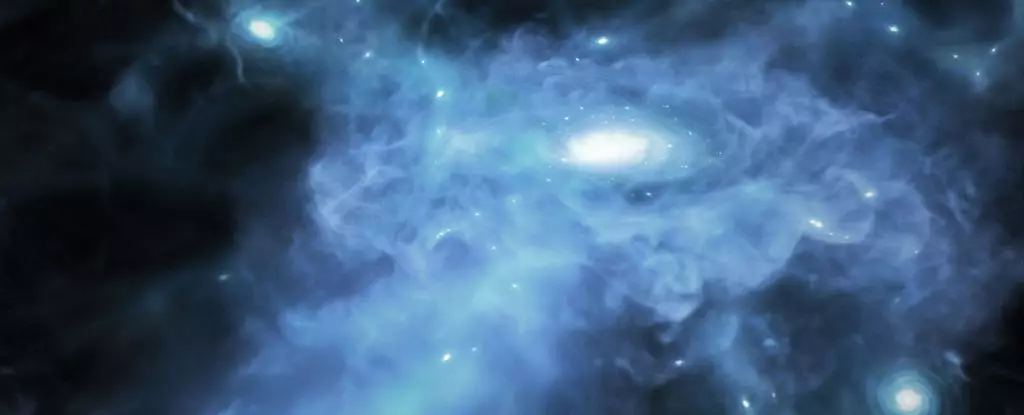Recent observations by the James Webb Space Telescope (JWST) have provided valuable insights into the formation processes of some of the Universe’s earliest galaxies during the turbulent era known as the Cosmic Dawn. The study, led by astrophysicist Kasper Elm Heintz, has revealed the active slurping of gas reservoirs into three newly forming and growing galaxies, offering what Heintz describes as the first ‘direct’ images of galaxy formation ever seen.
The Cosmic Dawn, which occurred just a few hundred million years after the Big Bang, remains shrouded in mystery due to the fog of neutral hydrogen that pervaded the early Universe, hindering the propagation of light. JWST’s ability to penetrate this fog using infrared wavelengths has allowed researchers to witness the birth of these early galaxies and gain insights into the construction of the first star systems in the Universe.
The three galaxies detected by Heintz and his team are estimated to have existed around 400 to 600 million years after the Big Bang, making them some of the earliest detected galaxies to date. The researchers were able to distinguish gas reservoirs around the galaxies, indicating active formation processes and suggesting that the galaxies had yet to form most of their stars at the time of observation. This observation marks the early stages of galaxy formation, shedding light on how stars and gas coalesced into galaxies during the Cosmic Dawn.
While the discovery of these early galaxies is a significant step forward in our understanding of the Cosmic Dawn, many questions remain unanswered. The study represents just the beginning of unraveling the mysteries of this tumultuous period in the Universe’s history. By further studying these galaxies and their formation processes, researchers hope to gain a deeper understanding of how the Universe evolved from its primordial state to the structure it possesses today.
The study of the Cosmic Dawn not only provides valuable scientific insights but also addresses fundamental questions about our origins as human beings. By peering back in time to witness the birth of some of the Universe’s first structures, researchers like Gabriel Brammer emphasize the importance of understanding where we come from and how the galaxies that surround us came into existence.
The recent observations of the Cosmic Dawn represent a significant milestone in our quest to unravel the mysteries of the early Universe. Through the detection of the formation processes of some of the Universe’s earliest galaxies, researchers have taken a crucial step towards understanding how the first star systems and galaxies emerged from the primordial soup of the Cosmos. As we continue to explore the depths of space and time, we are bound to uncover more secrets that will shed light on our cosmic origins.


Leave a Reply